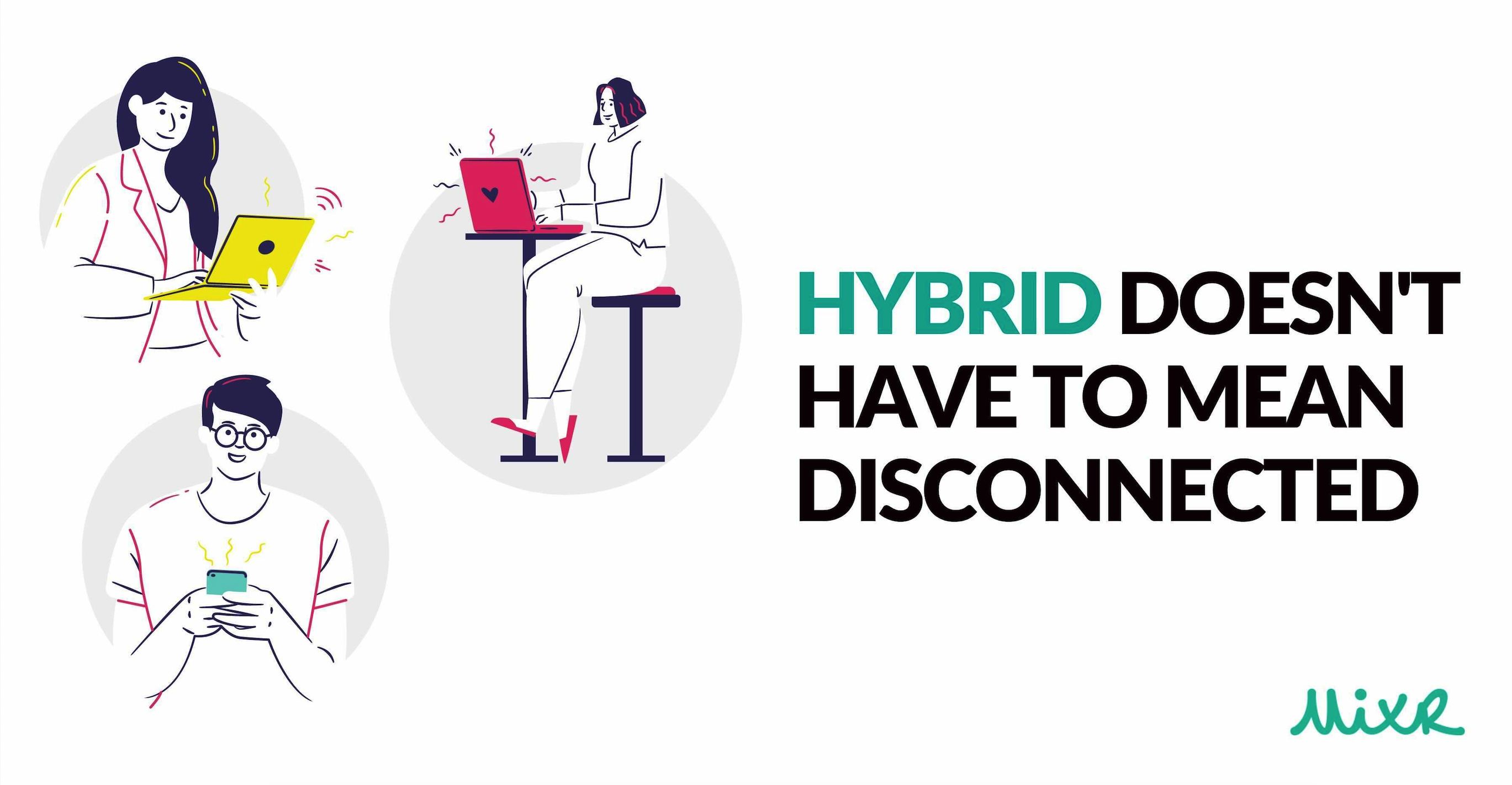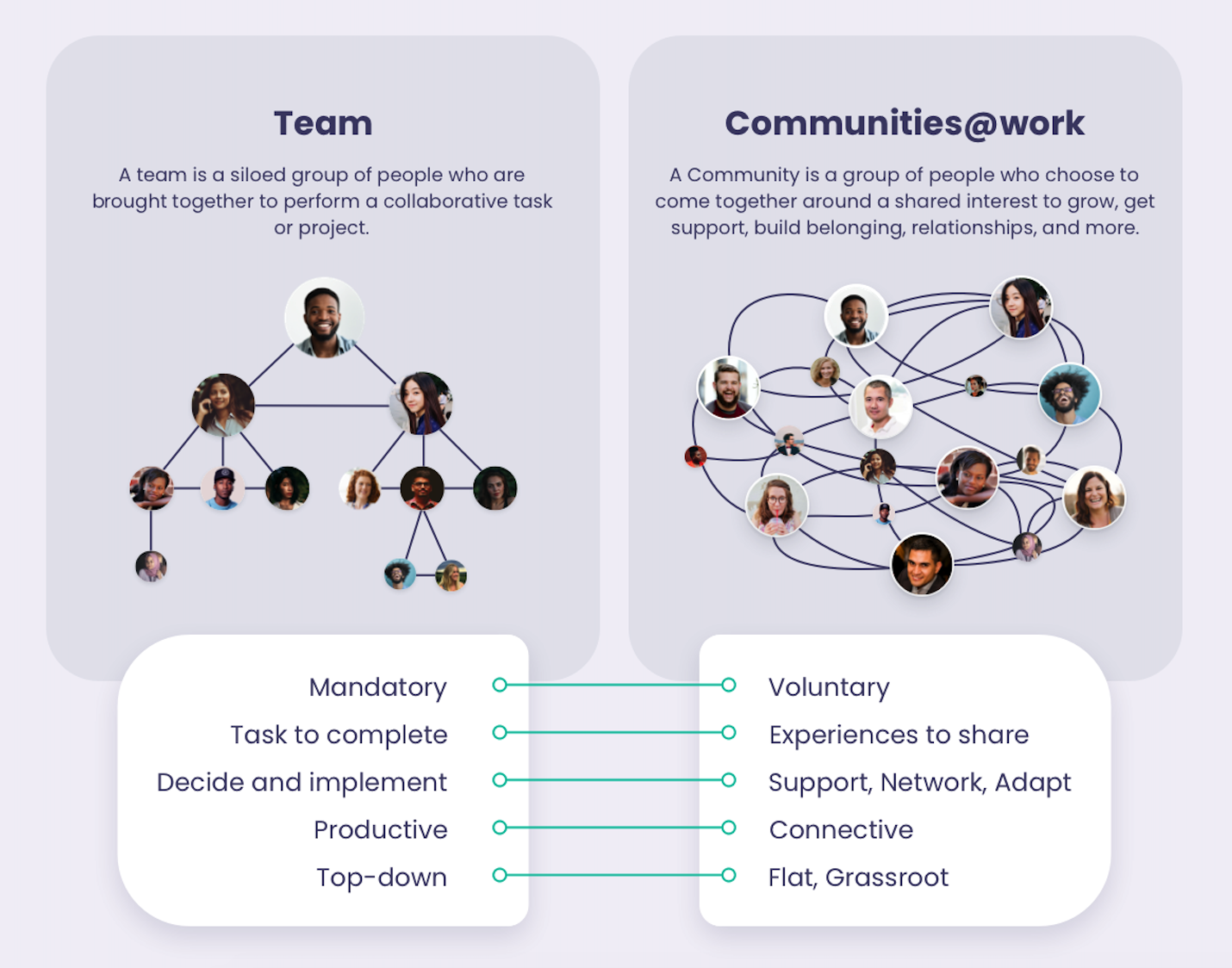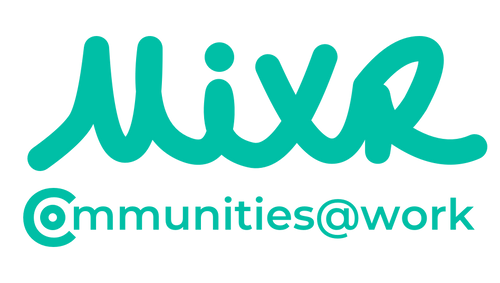
How to make hybrid work, work
Do you remember what pre-pandemic work was like? It’s hard to believe…but only 8% of meetings included a remote participant. Fast forward two years. Oh, how the times have changed.
According to Forbes, 73% of knowledge workers want to divide their time between home and office, and only 7% want to go back to the office full-time. While we’re all for in-office work, the fact of the matter is companies need policies & processes to support all types of work.
With hybrid work comes a host of challenges and opportunities. While many employees become more productive working at home - at least in the short run - many also experience things like video fatigue, connectivity issues, loneliness and burnout. Not to mention the blurred lines between home and work lives. What’s more? Think of the added stress on IT & HR departments figuring out how to support newly distributed workforces…The entire company is facing added tension and pressure, and there is urgency to find new ways to work together.
Despite these pain points, it’s becoming clear that we won’t be returning to a fully in-office model anytime soon. The future of work is hybrid. Here are some things to consider as your organization decides how to adopt the best hybrid model that suits your company and your people.
Making Up For What’s Lost
Hybrid work presents some challenges. With the right tools & processes in place, many of these challenges can be minimized.
First and foremost, organizations must understand what they’re losing with this transition. In a remote, hybrid or distributed environment: trust, belonging & friendship are harder than ever to come by, yet the need to nurture them is stronger than ever.
Do not downplay these factors, as research has proven time and again that they are crucial drivers of engagement, retention and employee wellbeing. When employees are dispersed, organizations must take extra steps to ensure trust & belonging are not being ruptured. This means approaching culture in a structured way: organizing extra check-ins, communicating more intentionally, making sure everyone feels comfortable, and empowering your people to deepen their connections with one another. At MixR, we refer to this as “unleashing the power of your community@work.” It’s about looking beyond the traditional notion of teams, and realizing the benefits of working together & connecting on a deeper level. When this connection happens from the bottom up, in an organic fashion, it creates positive outcomes for people and business.

Other common hybrid work challenges include:
- Not all WFH situations are created equal. Already existing inequalities can be further entrenched when only some people can work remotely and others cannot. Or when some people have adequate spaces and setups, and others do not.
- Proximity bias. Many people think that workers who come into the office are more productive than those who work remotely. This can be a problem when it comes to promotions and career progression if only the “most visible” are being recognized.
- Socializing differences. Remote workers sometimes fade into the background if a lot of socializing happens in the office - whether it’s over lunch or in the break room.
- Learning by shadowing. When in the office, people learn by observing & shadowing other working styles and processes. This is especially true for new hires who pick up on many important habits and cultural norms by just being in the same room as co-workers.
The MixR Magic At MixR, we always look at the “glass half full.” Some of these challenges, while daunting, can actually be viewed as opportunities. With the right culture, processes and technology at hand, you can set up a successful hybrid workplace. What makes MixR so perfect for hybrid work? Our platform addresses the root causes of loneliness, disengagement and burnout by scaling human connection in organizations of all shapes & sizes. Let’s dive in. Keep everyone connected. The truth is, whether you’re hybrid or not, it’s hard to build deep relationships at work. Not being in the same physical space only makes it harder. But that doesn’t mean you can’t go beyond teams and create a workplace that feels like a true community. Going hybrid could be your organization’s great catalyst for change: your best opportunity to re-organize and create better outcomes for all. So, go ahead, find those ways to recreate the magic that comes with being in the office together and embrace this new normal.MixR provides remote and in-office workers with the same opportunities to build interest-based and/or location-based communities and connect with one another in meaningful ways. Remote workers are also encouraged to join and create location-based communities to further interact with their local networks. A strong sense of community enables every employee to do their best work alongside the people they trust. Learn more. Be inclusive & supported. Everyone in a hybrid environment should feel like they can be seen, heard and seek support as needed - regardless of whether they’re in the office or remote. In addition, organizations must show empathy for employees who are grappling with new ways of working and blurred lines between work and home life. MixR helps cultivate a culture of inclusion and support. Every community on MixR is created by a group of people who share common interests, passions and experiences - allowing anyone within the organization to get a chance at representation and belongingness. Each member, no matter their situation, has access to a safe space to express themselves freely and seek support in total privacy. Learn more. Social connectivity can happen online, too. The “passing in the breakroom” or “taking a ride in the elevator” moments are unique to office settings and help create bonds that allow everyone to work well together. Social connectivity is a huge part of what allows us to collaborate in a productive way. There’s no reason you should give this up when moving over to a hybrid model. MixR takes the pressure off your other “productivity tools” and helps re-create some of the spontaneity of getting together in the office. Communities on MixR can center around anything from casual/informal chatter between team members about their favorite sports team, to a support group where working parents can share tips & tricks! This makes it easier to meet people beyond workplace responsibilities and break down silos. Added bonus: employees can connect with others in their area via location-based communities which creates an added layer of connectivity outside of the office. Learn more. Ready to go beyond teams and embark on your hybrid work journey? MixR is here to help. Let’s connect. Visit www.mixr.net to learn more and book a demo today.








